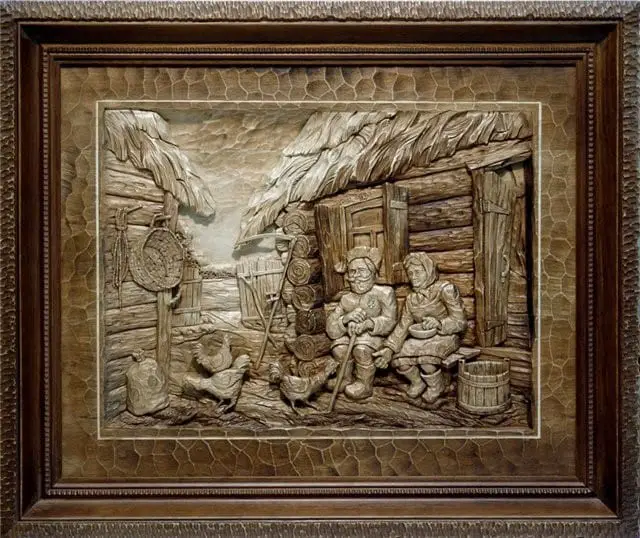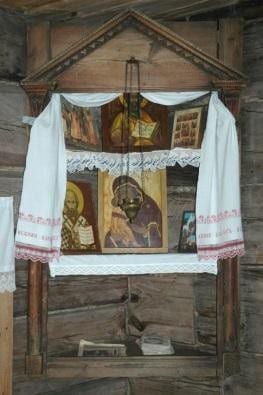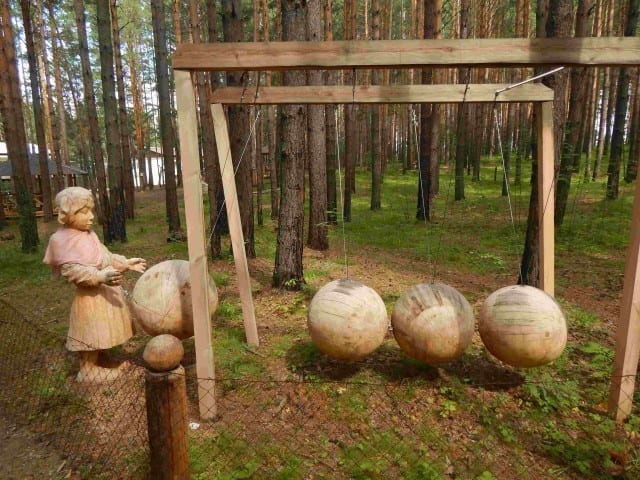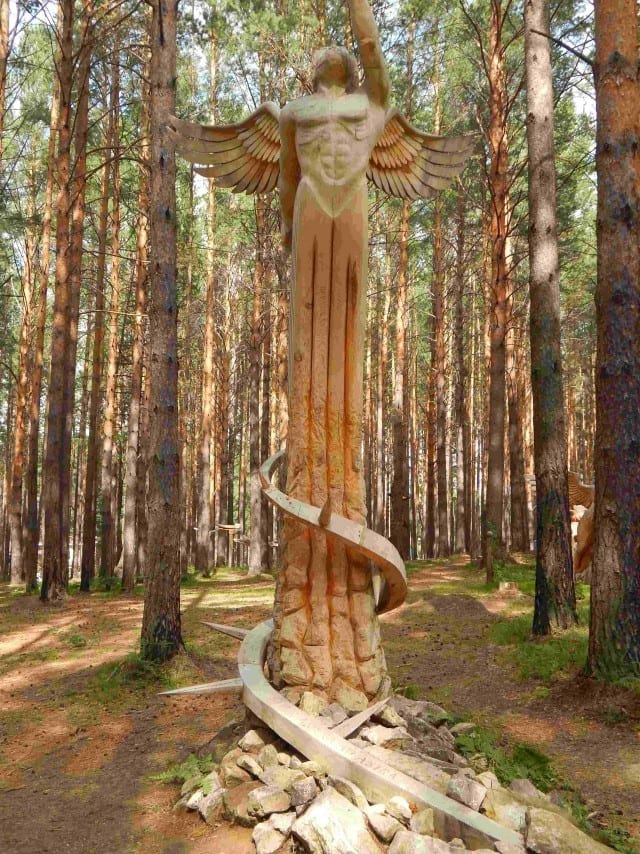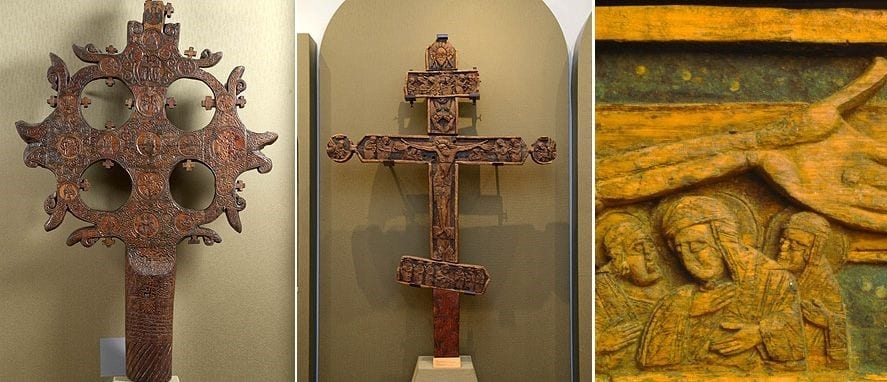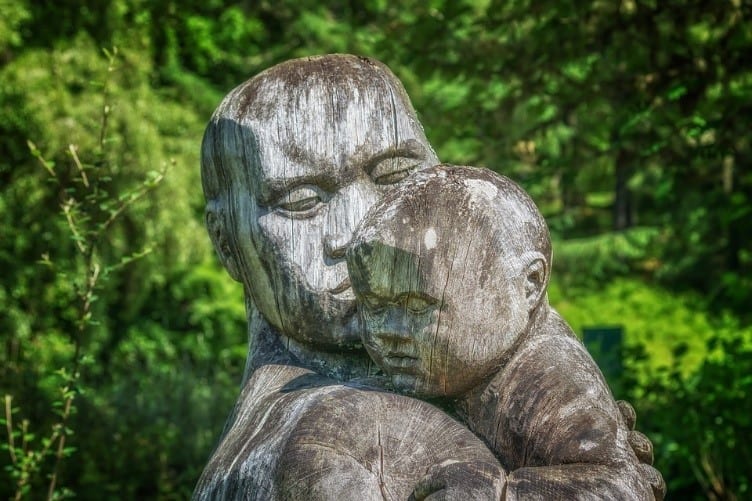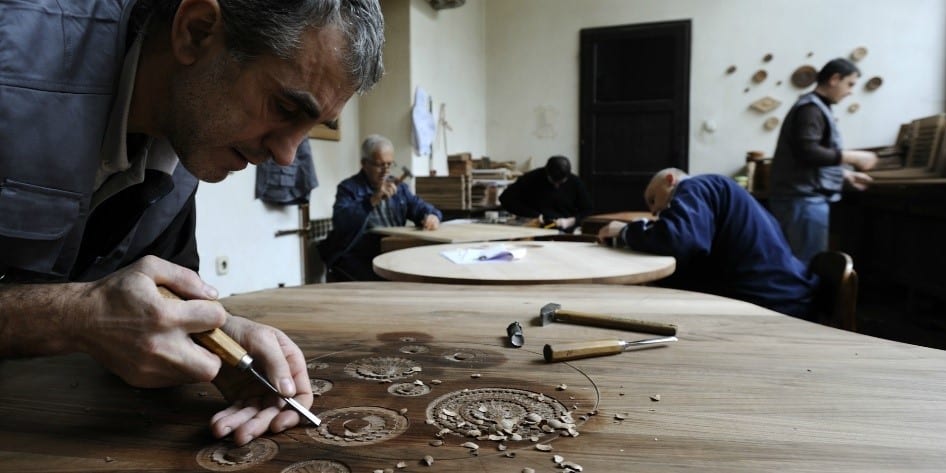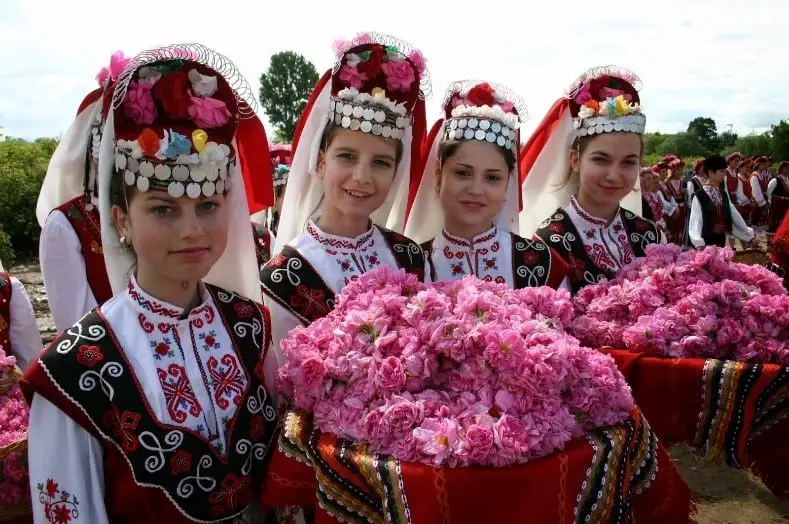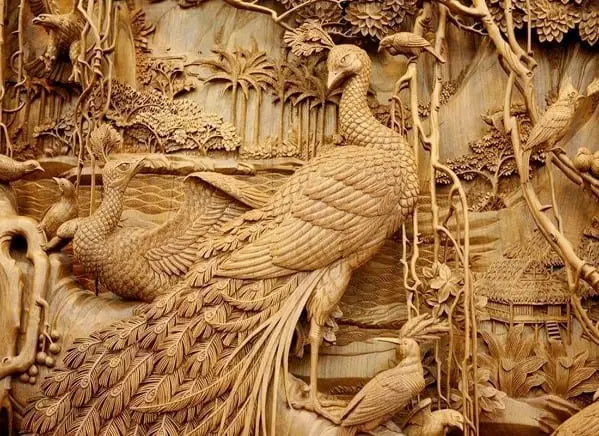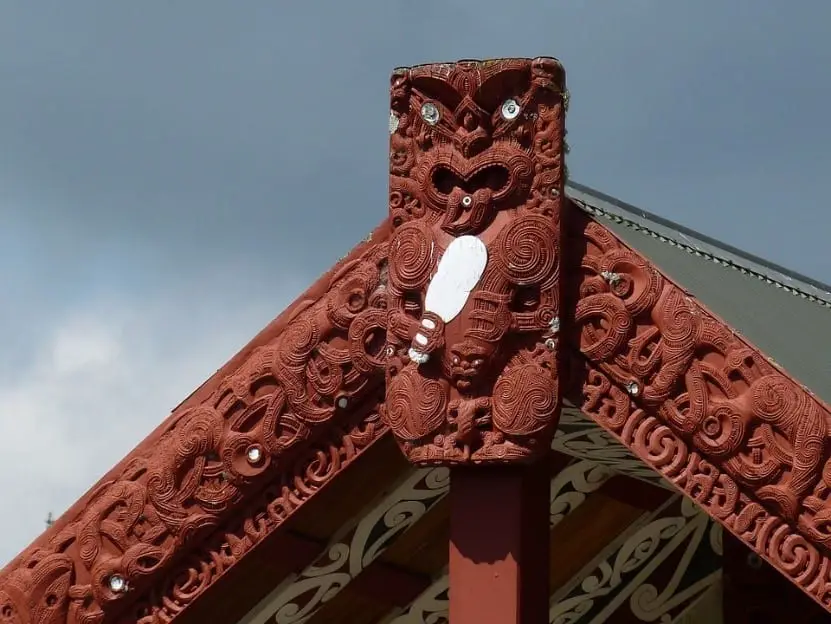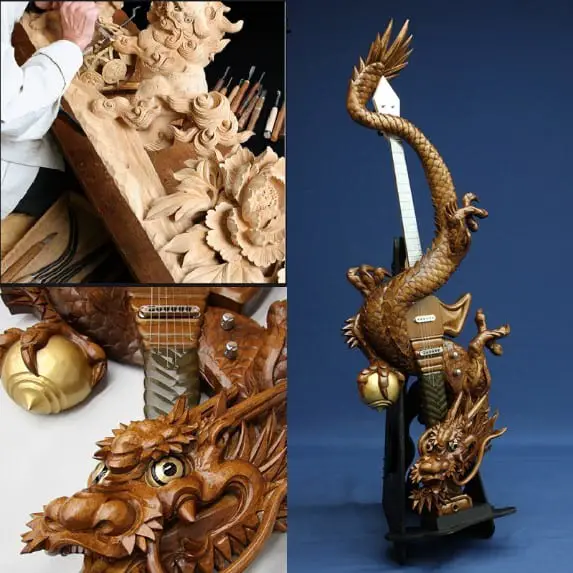There is a traditional Russian proverb that literally translates into “Alphabet is the step to wisdom.” Much like we cannot learn how to run before we learn how to walk, the art of woodcarving won’t reveal its secrets to the newbies for weeks, months, and years.
But for the old generations of Russians, woodcarving was more of an aspect of daily life than any secret.
To sum things up, 2 crucial factors need to be taken into consideration.
Firstly, the climate in Russia is characterized by a freezing cold winter and a relatively short summer season.
Secondly, Russia has a well-developed forest ecosystem.
Interestingly, a study on the Tree diversity patterns along the latitudinal gradient in Northwestern Russia points out to a whopping 72% for the prevailing percentage of the monocultural – Scots Pine.
Most noteworthy, working with wood back in time was a valuable skill in order for the Russians to survive and make the most out of the surrounding environment.
According to a Russian folk tale, even the animals were on the look for “summer in winter” trying to find their way out of the cold.
Ultimately, the cold winters did create the perfect atmosphere for the natives to spend a great amount of their time indoors carving wood. And moreover, most of them would do this for the mere pleasure of the process.
Looking at the beautiful examples of Russian woodcarving is a process of purifying the mind through the unique emotions embedded in the craft by the natives. And it is exactly these precious emotions from Russian woodcarving that we want to share with you!
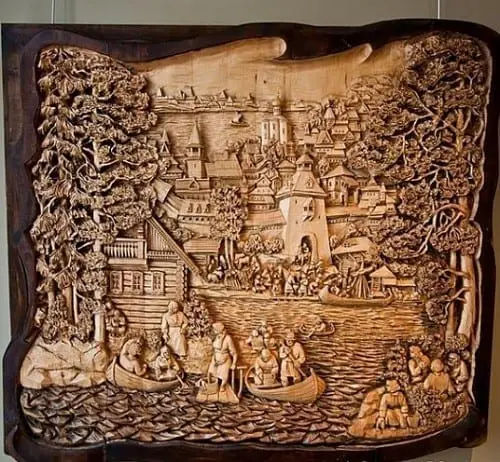
While woodcarving in many different forms was well-developed in Russia, one particular type which has been around for centuries, and this is geometrical carving.
Certainly, geometrical woodcarving is not a reserved territory of the Russians.
In fact, geometrical woodcarving is one of the oldest types of woodcarving. Interestingly, wood carving in Oceania has become quite popular in terms of geometrical patterns. What’s more, the first examples of art in New Guinea date back to 1500 BC.
However, when it comes to Russian geometrical woodcarving, data relating to the exact age of this craft is very scarce. It wasn’t until 1920 when carved items were first brought to the markets of Vyatka for sale.
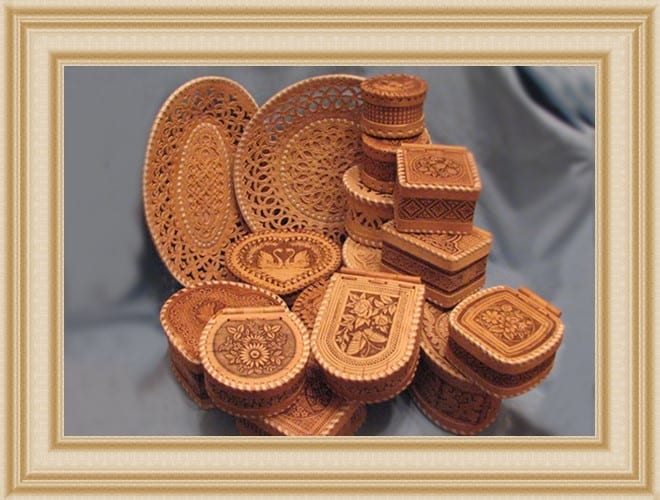
Without any doubt, though, the multiple and diverse objects intricately decorated with geometrical carvings varied from all sorts of furniture through utensils, labor tools, and iconostases.
Even the most humble Russian homes had a special place dedicated to the iconostasis. What’s more, there is a word for this special place, and it is “Krasnyi ugol” which translates into “beautiful corner.”
When it comes to the traditional Russian house, wood played an intricate role in both the interior, as well as the exterior.
Interestingly, Russians chose to build their houses with the use of very particular types of wood. These include spruce, pine, and larch.
The reason behind choosing these types of wood over others was not only availability but the excellent shape of the trunks.
These trees possess long and straight trunks which can adhere well to each other since the Russians used a framing technique which ensured the proper sealing of heat in the house.
Another interesting attribute of each house was the so-called izba. The izba can be described much like a basement, although we tend to underestimate the significance of having access to a well-built and functional basement nowadays.
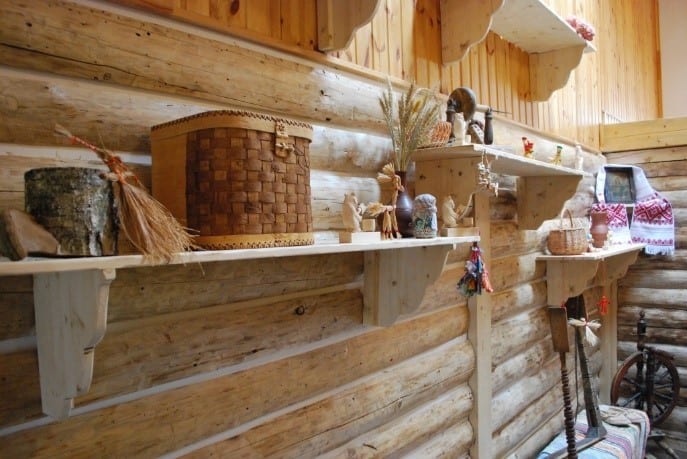
Then again, due to the cold and long winter in Russia, one of the purposes of the izba was to serve much like a store-house, where all the provisions needed to survive the cold winter days and nights were neatly placed.
Moreover, the building of the izba was such an important event that various rituals were performed. Probably one of the most common ones was an animal sacrifice. Typically, a chicken would lose its head in order to get the much-needed blessings.
On another note, the Russian houses are among the most stunning examples of complexly and masterfully carved buildings around the world.
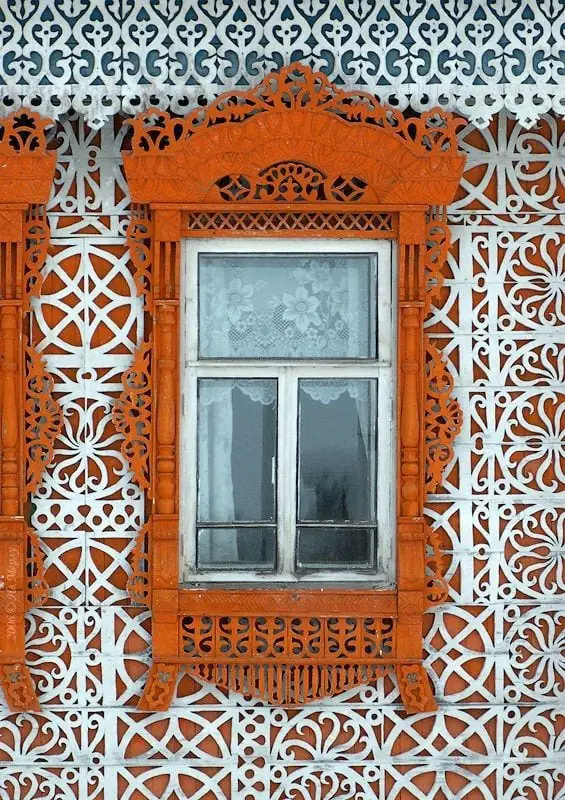

Up-to-date, Russian traditional log houses keep growing in popularity. A good example is the rise of the tiny house movement which often correlates the responsibility we share towards the surrounding environment with the use of natural materials.
An Original Russian Woodcarving Festival: No Entrance, No Tickets, Just Art!
An incredible event took place in Irkutsk, Russia, where woodcarvers from the region gathered to create a self-organized form of a woodcarving festival.
Above all, this festival was not advertised by any means, and the tourists who stumbled across the one-of-a-kind event were pleasantly surprised by all the beauty and skills showcased through the stunning wooden sculptures.
Amazingly, there are no tickets on sale or fancy ads for the event but just the big hearts of the natives on a plate, along with their deep love for the ancient craft of woodcarving.
As a result, wood virtuosos of various level of experience showcased their masterpieces freely in the local park, and the exhibition was wittily called by some of the visitors “wooden sculpture park in Lukomorye.”
Moreover, there is no limit when it comes to the themes covered in the unique woodcarving festival. Hence, the sculptures vary from ones depicting horror movies to ones representing traditional symbols of the Slavic mythology.
Exploring the Beauty of Ancient Russian Woodcarving: Novgorod
Veliky Novgorod, formerly named Novgorod, is a city in Novgorod region that is often referred to as the “birthplace of Russia.”
But what’s more, one of the most ancient handicrafts in the Novgorod was none other but woodcarving. Interestingly, the focus of the ancient carvings in Novgorod is closely related to the religious beliefs of the natives.
Thus, the gifted woodcarvers put a lot of effort, skills, knowledge, and will in order to create all kinds of different wooden objects to praise the Lord. These include icons, icon cases, chandeliers, crosses, altar canopies, special places for praying, pulpits, and holy gates, among others.
As we briefly discussed above, Russians have a very deep and well-established connection with religion.
The majority of Russians are Orthodox Christians. It was all the way back in 988 when the Russians adopted Christianity under the reign of Prince Vladimir of Kiev. Subsequently, the art of woodcarving in Russia was highly influenced by the religious beliefs of the nation, and this trend continues up-to-date.
Some of the most popular patterns in Russian woodcarving are not solely limited to religion, though. The beauty of the surrounding environment and architecture, as well as the natural flora and fauna of the country, can be found as scenes or symbols in traditional carvings.
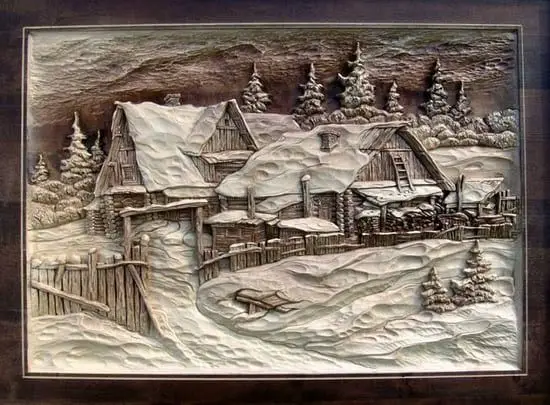
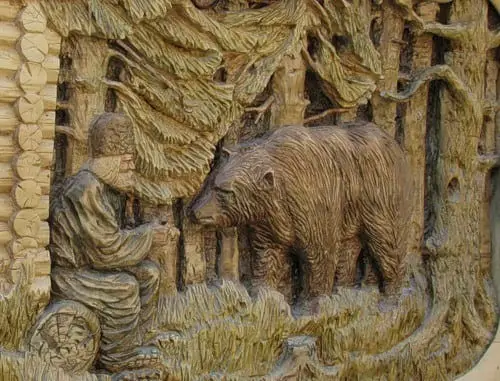
The Bottom Line
The emotions we can get from Russian woodcarving cannot be possibly put into strict frames. Every person experiences art in a unique way, and that’s why the beauty of each masterpiece is so immense, so intricate, and so deep.
Above all, looking at the fine carvings of the different nations, one can take an incredible journey throughout history. But during this journey, facts and numbers don’t exist.
It is simply the art and the contemplator, together in a perfect dance, exchanging stories, insights, ideas, and emotions without ever saying a single word.
Whether we gaze at the carvings including religious elements or carvings depicting a natural landscape, we have the amazing chance of piercing through the veil of time as if looking straight into the souls of the woodcarvers.
Just like Alexander Pushkin wrote in his legendary novel Eugene Onegin “It’s a lucky man, a very lucky man, who is committed to what he believes, who has stifled intellectual detachment and can relax in the luxury of his emotions – like a tipsy traveler resting for the night at a wayside inn.”
Much like a good book, the ancient craft of woodcarving is a legacy for the next generations to come, carrying the emotions through space without the need for complex equipment or explanations – and isn’t this magic?
